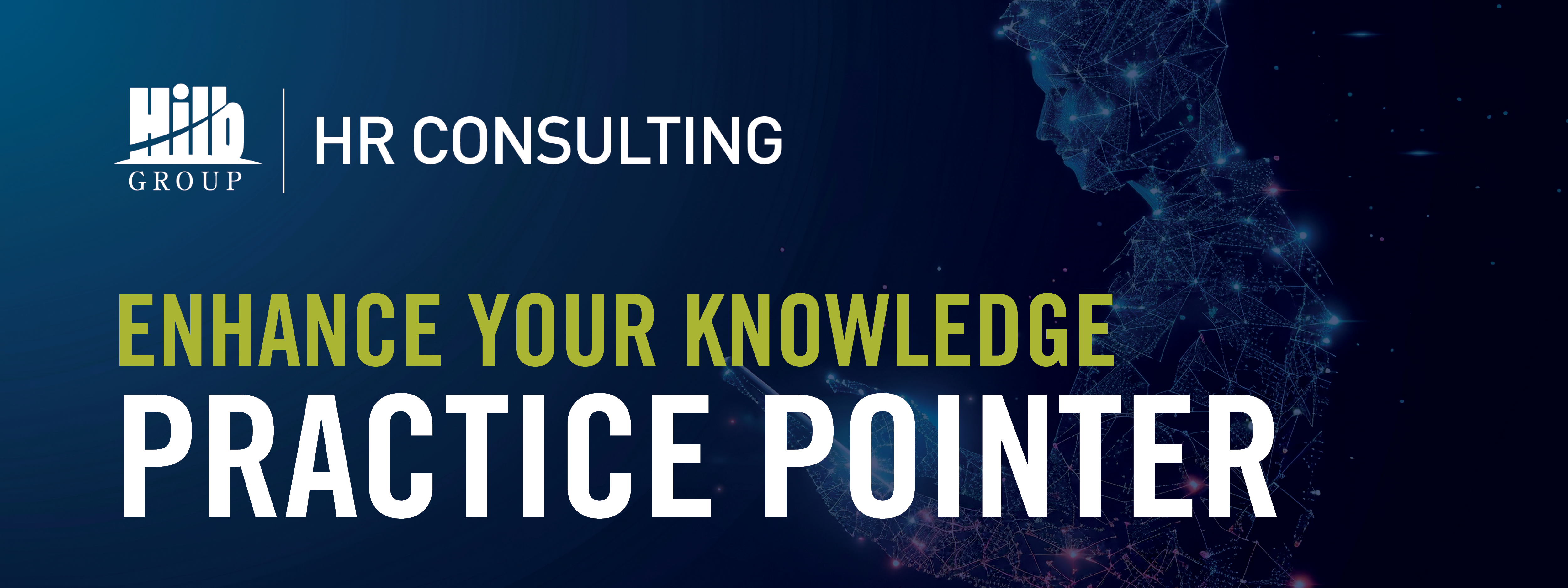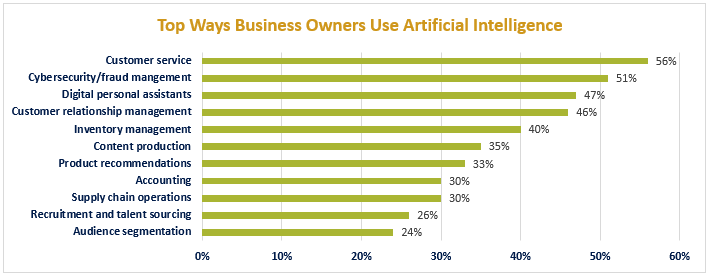
October 31, 2024
Does the thought of Artificial Intelligence (AI) integrating into the workplace send chills down your spine? Many employees and employers alike have been thinking, “How will AI affect jobs in the workplace?” While AI might still feel like a futuristic concept, it has actually been a part of our daily lives for years — and some people are surprised to learn they have been interacting with AI without realizing it. Have you ever used a customer service chat feature? If so, you’ve more than likely already experienced AI in action. So, how can employers use AI technology to enhance the workplace?
What, exactly, is Artificial Intelligence (AI)?
In general, AI refers to computers or machines that simulate human intelligence. AI can be broadly classified based on things like technology, functionality, and capability. Examples of Artificial Intelligence include:
- Generative AI: The use of AI to create new content such as text, images, music, audio, and videos. Examples include ChatGPT and DALL-E (an image generation tool).
- Natural Language Processing (NLP): This programming gives computers the ability to comprehend text and spoken words like humans. Examples include chatbots, Apple’s Siri, and Amazon’s Alexa.
- Machine Learning: This technique uses data and algorithms to imitate the way humans learn to generate responses or information. Examples include facial recognition to unlock smartphones and social media suggestions for newsfeeds or friend “tags.”
How AI Tools are Transforming the Workplace
Many organizations are pioneering the utilization of AI systems to enhance several areas of business practices. Examples include using AI tools like ChatGPT, Grammarly, or ClickUp to create content, interview, train and evaluate employees, and track productivity. A 2023 Forbes Advisor[1] survey of 600 business owners outlined how they are currently using or planning to use AI technologies in the workplace. Below is a snapshot of results:

The Regulatory Landscape and AI Ethics in the Workplace
Currently, there are no federal laws specific to the use of Artificial Intelligence in employment. However, several agencies are setting parameters on how businesses should and should not use AI. For example, the Department of Labor (DOL) has issued principles which emphasize ethical development, human oversight, transparency in use, and protection of employment rights. The DOL has also issued a framework to guide employers using AI tools for recruiting and hiring. In addition, the EEOC has issued its technical assistance document to assess impacts of AI technologies for issues that could arise under Title VII of the Civil Rights Act of 1964. Keep in mind that other regulations, such as the Americans with Disabilities Act (ADA), would also apply to the use of AI in the workplace.
States nationwide are also working to regulate Artificial Intelligence use. Most employment-related legislative efforts focus on ensuring transparency and preventing discrimination and bias in AI-driven decision-making tools. At the time of the writing of this Practice Pointer, Colorado, Illinois, and New York City have enacted regulations expressly addressing potential algorithmic discriminations from using an AI system in employment decisions. For example, Illinois law expressly prohibits using “zip codes as a proxy for protected classes” when using AI tools for employment purposes. The basis for this provision is that zip codes can strongly relate with race and national origin, and using the information inappropriately can lead to disparate impact findings. It is important to note that, while employers may use AI technology to enhance their procedures, they still should have human oversight to prevent potential biases that would impact their organization’s compliance. It should also be noted that several additional states have pending or proposed laws in place to regulate the use of Artificial Intelligence in the workplace, so the regulatory landscape is likely to expand significantly in future years as AI development continues.
Thoughtful Implementation of AI
While leaders are pondering when, why, and how to integrate AI technologies into their operations, regulatory agencies are attempting to keep pace with evolving AI development to ensure ethical concerns are addressed in the workplace. It might seem easy to create job descriptions and screen resumes quickly using AI systems. However, there are often unintended ethical implications when employers use AI systems in decision-making processes – or even more concerning, employees using Artificial Intelligence without their employer’s knowledge. When business leaders and human resources partner with their technology teams to strategically position the use of AI technologies, it can lead to thoughtful enhancement of the workplace. Like so many HR topics, the use of AI systems in the workplace is a gray area and at the end of the day, AI doesn’t have to be scary so long as humans are smart about it.
Key Takeaways About AI Technologies in the Workplace
There’s no doubt that deploying AI systems can be beneficial in streamlining work and increasing efficiencies across a broad spectrum of tasks and industries. However, using AI technologies comes with serious risks and responsibilities including ethical considerations, security dangers, accuracy concerns, intellectual property questions, copyright infringement claims, and a litany of other risks. Although the full scope of impacts will likely take years to assess, the simple truth is that organizations need to do their research and approach AI systems wisely now to adhere to ethical principles.
Since AI will likely only grow in depth and breadth, the key takeaway is to get ahead of the curve. Employers should do their research and understand the ins and outs of the AI system their business is considering. For example, if using AI tools for recruiting purposes, employers should understand the AI model algorithms being used to ensure individuals are not screened in or out based on protected characteristics. Organizations that elect to implement AI systems must be transparent about how and when the technology is being used to address ethical challenges and mitigate potential risks. Most importantly, employers should create workplace policies and guidelines to protect the company and ensure employees understand their parameters. Remember, AI systems should not be a substitute for human judgment, collaboration, or creativity! Be cautious when using AI-produced results, as it should always be validated for accuracy. Finally, keep an eye on state and local legislation to safeguard business compliance.
In closing, remain open to the possibilities AI technology can have in the workplace! There are some incredibly powerful AI systems that can provide opportunities for organizations to work more productively.
Rest assured, this topic was written by a human, not a robot.
If you have any questions regarding this Practice Pointer, please email us.
[1] Haan, A., Watts, R. (2023, April, 24). How Businesses are Using Artificial Intelligence in 2024. Forbes Advisor. https://www.forbes.com/advisor/business/software/ai-in-business/
This content is provided with the understanding that Hilb Group is not rendering legal advice. While every effort is made to provide current information, the law changes regularly and laws may vary depending on the state or municipality. The material is made available for informational purposes only and is not a substitute for legal advice or your professional judgment. You should review applicable laws in your jurisdiction and consult experienced counsel for legal advice. If you have any questions regarding this content, please contact the Hilb Group HR Consulting Practice.
